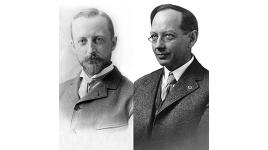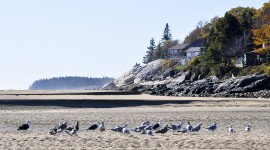Pioneer Information
Born in Portland, Maine, Lamb graduated from Brown University in 1923 and went on to study landscape architecture and city planning at Harvard University. In 1926, while still at Harvard, he was hired to create the Longfellow Garden, a 20,000-square-foot Colonial Revival garden located in what had been the Wadsworth-Longfellow family’s farmyard in Portland, Maine. (The drawings and sketches he made of the garden beds formed the basis for the garden’s rehabilitation in 2007.) From 1927 to 1930 Lamb worked for the Olmsted Brothers firm. In 1935 he worked in Maine under the auspices of the Rural Resettlement Administration. Between 1947 and 1949, he laid out parking lots, picnic areas, and trails for the newly established Reid State Park, and he also worked on plans for Sebago Lake State Park. In the 1950s Lamb served as the senior planner in Portland’s City Planning Department, where he designed sites for schools, sports fields, traffic overpasses and railroad underpasses, and planned the North Deering and Stroudwater residential areas. In 1952, Lamb created a plan to further develop and expand Riverside Cemetery in Cape Elizabeth, Maine, and by1955 he had become the planning director for the City of Gloucester, in Massachusetts. Lamb was also a noted musician: he taught at the Hartford School of Music as a concert pianist and he played the bassoon for the Portland Symphony Orchestra for three decades. He died while hospitalized in Sanford, Maine, at the age of 94.
















